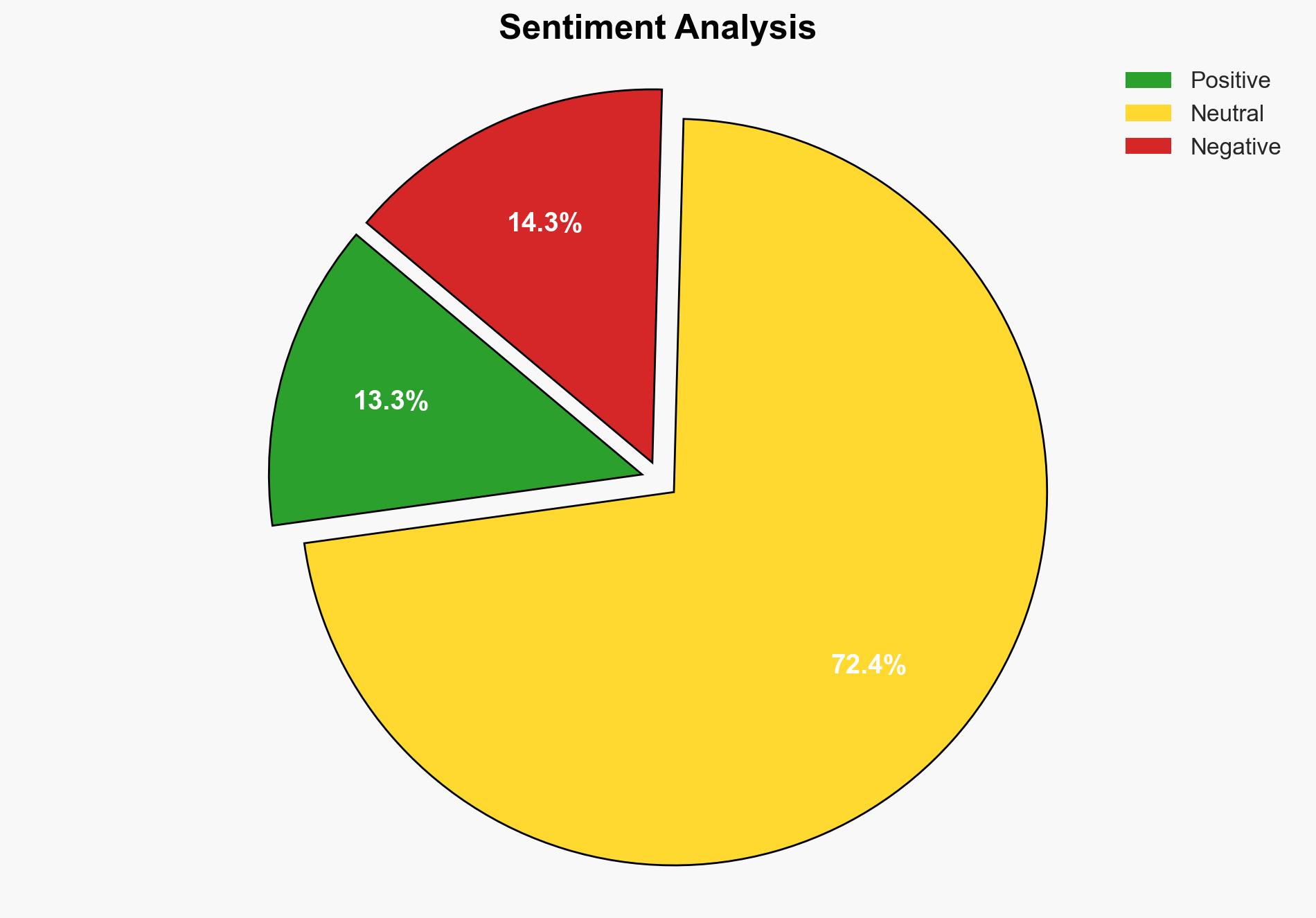Subsea internet cables can now listen for sabotage using irregular pulses of light – TechRadar
Published on: 2025-03-18
Intelligence Report: Subsea Internet Cables Can Now Listen for Sabotage Using Irregular Pulses of Light – TechRadar
1. BLUF (Bottom Line Up Front)
Recent advancements in subsea internet cable technology have enabled the detection of sabotage through irregular pulses of light. This development is crucial for early identification and prevention of disruptions to global internet infrastructure. The technology, developed by AP Sensing, allows for the detection of disturbances caused by divers or ships, enhancing the security of undersea cables. Given the geopolitical tensions and past incidents of cable sabotage, this innovation is a significant step toward safeguarding critical communication channels.
2. Detailed Analysis
The following structured analytic techniques have been applied for this analysis:
General Analysis
The technology utilizes acoustic energy to detect disturbances in fiber optic cables. When a diver touches a cable or a ship drags an anchor, the resulting acoustic energy alters the light pulses traveling through the cable. This change can be detected and analyzed to pinpoint the location and nature of the disturbance. The system is capable of detecting vibrations from hundreds of meters to kilometers away, depending on the energy transmitted through the cable. This capability is particularly relevant in light of recent sabotage incidents in the Baltic Sea, where evidence suggests deliberate interference by Russia’s shadow fleet.
3. Implications and Strategic Risks
The ability to detect sabotage in real-time has significant implications for national security and economic stability. The protection of subsea cables is critical, as they carry the majority of the world’s internet traffic. Disruptions can lead to widespread communication breakdowns, affecting businesses, governments, and individuals globally. The geopolitical landscape, particularly in regions like the Baltic Sea, poses a risk of increased sabotage attempts. The involvement of state-sponsored actors further complicates the security environment, necessitating robust detection and response mechanisms.
4. Recommendations and Outlook
Recommendations:
- Enhance international cooperation and information sharing to protect subsea cable infrastructure.
- Invest in the deployment of advanced detection technologies across critical cable routes.
- Encourage regulatory frameworks that mandate the installation of monitoring systems in new cable projects.
- Develop contingency plans for rapid response to detected sabotage attempts.
Outlook:
Best-case scenario: Widespread adoption of detection technology leads to a significant reduction in successful sabotage attempts, enhancing global internet stability.
Worst-case scenario: Continued geopolitical tensions result in increased sabotage activities, overwhelming detection capabilities and causing major disruptions.
Most likely scenario: Gradual implementation of detection systems improves security, but isolated incidents of sabotage continue to pose challenges.
5. Key Individuals and Entities
The report mentions Daniel Gerwig and Benedict as significant individuals involved in the development and analysis of this technology. Additionally, AP Sensing is identified as the organization behind the technological advancements in subsea cable detection.





